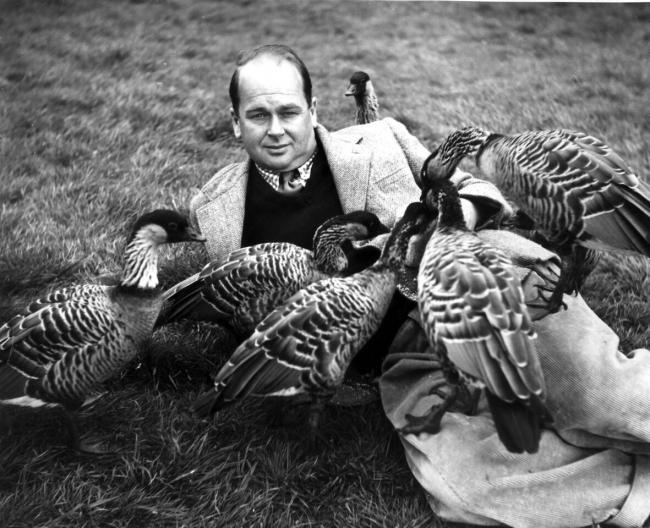 Peter Scott (1909-1989) was a sportsman, ornithologist, painter, TV presenter and conservationist. His greatest legacy is the Wildfowl & Wetlands Trust (WWT) which he founded in 1946.
Peter Scott (1909-1989) was a sportsman, ornithologist, painter, TV presenter and conservationist. His greatest legacy is the Wildfowl & Wetlands Trust (WWT) which he founded in 1946.
Peter Scott was born in 1909, the son of the explorer Robert Falcon Scott and the sculptor Kathleen Bruce. As a young man his interests were art and sport. He became a noted wildlife painter and won a bronze medal for sailing at the 1936 Olympics.
In the Second World War he served with distinction in the navy and invented a camouflage painting scheme said to be so effective that it caused collisions!
In 1946 he founded the Severn Wildfowl Trust (now the Wildfowl & Wetlands Trust) at Slimbridge. It was here that he saved the nene or Hawaiian Goose from extinction by a captive breeding programme. The nene was later reintroduced to Hawaii – there are now c800 birds in the wild. Scott’s large painting of nenes in flight can still be seen at Slimbridge.
From 1955 to 1981 Look, his series of natural history films, appeared on the BBC. They included the first BBC natural history film in colour.
He received many honours and awards for his work including an FRS, the WWF Gold Medal and a knighthood
Scott left five enduring legacies:
- The Wildfowl & Wetlands Trust which now has nine sites in the UK and an active conservation programme.
- The Hawaiian Goose, which he saved from extinction.
- The World Wide Fund for Nature, of which he was the founding chairman.
- The Red Data Books, which list the world’s endangered species.
The tradition of natural history film-making to which he contributed strongly and which has encouraged untold numbers of people to understand and value the natural world.
Truly, a remarkable life!
